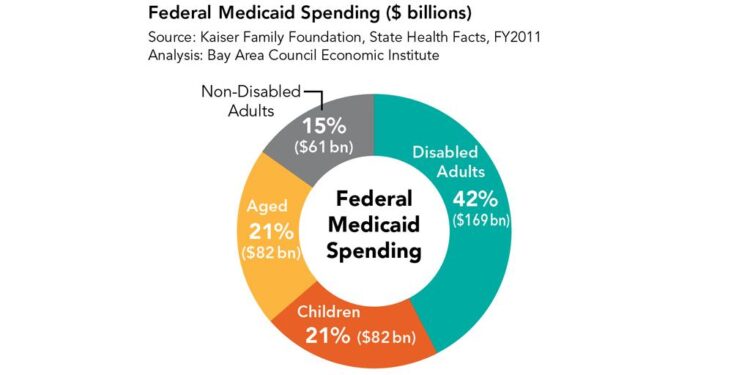Medicaid Reform: Navigating the Complex Political Terrain
The ongoing transformation of the political environment has placed Medicaid reform at the forefront of discussions among lawmakers, healthcare advocates, and citizens. With healthcare expenses on the rise and a growing need for accessible medical services, the future of this vital program hangs in the balance. As various stakeholders present differing visions for structuring Medicaid to meet both financial and humanitarian goals, they are faced with significant implications stemming from potential reforms. This article explores the intricate politics surrounding Medicaid by analyzing diverse perspectives that influence this essential component of America’s healthcare framework.
Impact of Medicaid Reform on Disadvantaged Families
The effects of Medicaid reform on economically disadvantaged families are complex and merit thorough examination. As changes take effect, they can significantly alter access to critical healthcare services. Families who depend on Medicaid for preventive care may find themselves facing either enhanced access or new obstacles due to shifts in coverage scope. Possible outcomes include:
- Expanded access to services: Certain reforms aim to broaden eligibility criteria, potentially allowing more families to obtain necessary medical attention.
- Increased out-of-pocket expenses: Reforms emphasizing cost-sharing could impose financial burdens on families, making essential treatments less affordable.
- Alterations in provider availability: Changes in reimbursement structures may lead to reduced access to familiar healthcare providers.
The socioeconomic ramifications of these reforms are profound. A well-executed reform initiative could offer stability for low-income households, empowering them to make proactive health choices rather than reactive ones. Conversely, poorly conceived changes might worsen health disparities and increase financial instability among vulnerable populations. The table below highlights key factors that warrant close monitoring:
| Factor | Plausible Impact |
|---|---|
| Simplified Enrollment Procedures | Easier requirements could boost participation rates. |
| Coverage for Preventive Services | Broadening access can enhance overall health outcomes. |
Balancing Cost Efficiency with Quality Care in Medicaid
Navigating the fine line between cost efficiency and quality care within Medicaid necessitates a comprehensive strategy that prioritizes patient outcomes while maintaining fiscal responsibility. One promising approach is adopting value-based care models, which encourage providers to concentrate on patient health results instead of merely increasing service volume. In addition to these models, states might consider implementing several strategies:
- Investment in Preventive Care Initiatives: Focusing resources on preventive measures can mitigate long-term costs associated with chronic illnesses.
- Create Tiered Provider Networks: Establishing different levels within provider networks encourages beneficiaries to seek care from high-quality options that also demonstrate efficiency.
- Pursue Integrated Care Systems: Coordinating mental health services alongside physical health and social support can enhance patient experiences while minimizing redundancy across systems.
Additionally, utilizing data analytics is crucial for identifying high-cost areas within Medicaid as well as inefficiencies needing attention. By employing data-driven decision-making practices effectively, states can uncover misallocated resources and optimize care delivery methods based upon insights gained from metrics such as:
| Metric | < | Description | |||||
|---|---|---|---|---|---|---|---|
| <<< td >Monitor readmission frequency along with underlying causes; improve coordination efforts. | < tr ><<< td >Cost Per Patient | <<< td >Examine spending patterns per individual; identify opportunities for savings. | < tr ><<< td >Patient Satisfaction Ratings | <<< td >Gather feedback aimed at enhancing service delivery experiences. |
< Political Hurdles: Cultivating Bipartisan Support for Lasting Reform < In an increasingly divided political climate,The pursuit of comprehensive reform initiatives underscores an urgent need for collaboration across party lines . As legislators confront escalating costs alongside accessibility challenges , bipartisan cooperation emerges as pivotal towards achieving sustainable solutions . To facilitate this process , stakeholders must engage openly , concentrating their efforts around shared objectives rather than partisan divides . Strategies conducive towards fostering unity include : <
<<< li >>Emphasizing transparency : Prioritize clarity regarding funding allocations along expenditure decisions . li >> <<< li >>Engaging diverse stakeholders : Include input from various parties including providers patients advocacy groups ensuring holistic perspectives inform policy development . li >> <<< / ul > <<< p >>The current political landscape also calls upon innovative legislative proposals appealing broadly across party lines ; integrating flexible funding mechanisms emphasizing preventative measures allows policymakers craft frameworks addressing inefficiencies garnering wider support . Below outlines simplified breakdown proposed considerations : p >> <<< table class= " wp-block-table " > Bipartisan Appeal
|
/ head >
| / tbody <
>>>>> / h2 < >>>>>> h3 = Conclusion p = The ongoing discourse surrounding medicaid reform continues shaping our nation’s political landscape ; it remains imperative lawmakers navigate complexities inherent within issue thoughtfully & proactively given stakes involved millions Americans relying pivotal programs meeting their unique needs . As we advance forward into uncharted territory concerning potential changes affecting medicaid system itself , dialogue will undoubtedly influence not only policies governing public health but broader conversations surrounding social safety nets America overall . Continued vigilance engagement all relevant parties essential seeking solutions promote equity stability throughout society . |































